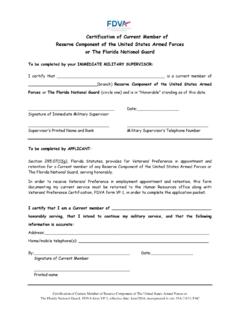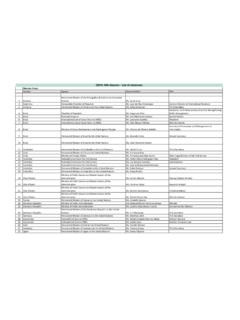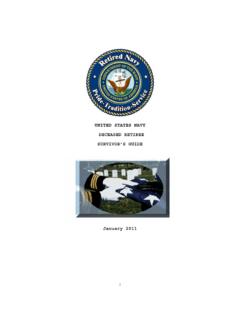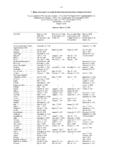Transcription of Safety and security on the Internet - WHO
1 Based on the findings of the second global survey on eHealthGlobal Observatory for eHealth series - Volume 4 Safety and security on the InternetChallenges and advances in member states iiWHO Library Cataloguing-in-Publication DataSafety and security on the Internet : challenges and advances in member states : based on the findings of the second global survey on eHealth.(Global Observatory for eHealth Series, v. 4) - utilization. security . to information. informatics. Global Observatory for eHealth. ISBN 978 92 4 156439 7 (NLM classification: W ) World Health Organization 2011 All rights reserved. Publications of the World Health Organization are available on the WHO web site ( ) or can be purchased from WHO Press, World Health Organization, 20 Avenue Appia, 1211 Geneva 27, Switzerland (tel.: +41 22 791 3264; fax: +41 22 791 4857; e-mail: Requests for permission to reproduce or translate WHO publications whether for sale or for noncommercial distribution should be addressed to WHO Press through the WHO web site ( ).)
2 The designations employed and the presentation of the material in this publication do not imply the expression of any opinion whatsoever on the part of the World Health Organization concerning the legal status of any country, territory, city or area or of its authorities, or concerning the delimitation of its frontiers or boundaries. Dotted lines on maps represent approximate border lines for which there may not yet be full mention of specific companies or of certain manufacturers products does not imply that they are endorsed or recommended by the World Health Organization in preference to others of a similar nature that are not mentioned. Errors and omissions excepted, the names of proprietary products are distinguished by initial capital reasonable precautions have been taken by the World Health Organization to verify the information contained in this publication.
3 However, the published material is being distributed without warranty of any kind, either expressed or implied. The responsibility for the interpretation and use of the material lies with the reader. In no event shall the World Health Organization be liable for damages arising from its in on the findings of the second global survey on eHealthGlobal Observatory for eHealth series - Volume 4 Safety and security on the InternetChallenges and advances in member states ivAcknowledgments This report would not have been possible without the input of the Observatory s extensive network of eHealth experts and the support of numerous colleagues at the World Health Organization headquarters, regional, and country offices. Sincere thanks are due to over 800 eHealth experts in 114 countries worldwide who assisted with the design, implementation, and completion of the second global thanks to the authors of this work Kevin Clauson and Karen Vieira, and the international expert reviewers including: Erin Holmes, Lana Ivanitskaya, Pauline Sweetman, and Michael Veronin.
4 The publication was internally reviewed by Najeeb Al Shorbaji and Joan are grateful for the financial support and collaboration of the Rockefeller Foundation. Our appreciation goes to Jillian Reichenbach Ott for the design and layout, and Kai Lashley for global survey and this report were prepared and managed by the WHO Global Observatory for eHealth: Misha Kay, Jonathan Santos, and Marina credits: Thinkstock, page 55 - WHO 1 Table of contentsAcknowledgments ivExecutive summary 51 Introduction 91 1 Internet pharmacies 101 2 Internet security 12 Spam 12 Viruses and malware .. 14 Phishing scams .. 151 3 Online Safety of children and adolescents 16 Unsupervised access to children and teens.
5 161 4 Digital literacy and online health information quality 16 Accuracy and reliability of online health information .. 17 Online Health Information in developing countries .. 192 Review of the literature 212 1 Internet pharmacies 21 Methodology.. 21 Safety of medications purchased online: is there cause for concern?.. 22 Availability of prescription-only drugs and lack of clinical oversight .. 22 Medical questionnaires .. 23 Internet pharmacy locations .. 24 Counterfeit and substandard medications .. 24 Packaging and labelling .. 25 Summary .. 25 22 2 Internet security 28 Methodology.. 28 Pharmaceutical and health-related spam, spim, and spit .. 28 Does spam affect consumer behaviour? .. 28 Reliability and validity of health products purchased from spam e-mails.
6 29 Summary .. 302 3 Online Safety of children and adolescents 31 Methodology.. 31 Are children and adolescents at risk when online? .. 31 Children and adolescents online without supervision .. 31 The link between children online and child pornography .. 32 Summary .. 322 4 Digital literacy and online health information quality 33 Methodology.. 33 Searching for health information online: is quality content easily accessible? ..34 The role of search engines .. 34 How do health information seekers search for information?.. 35 Quality of search engine results .. 35Do Internet searches retrieve desired health information? .. 36 Summary .. 363 Analysis and discussion of survey results 393 1 Internet pharmacies 39 Regulation of Internet pharmacy operations .. 40 Regulation of online purchase of pharmaceuticals from abroad.
7 43 Implications .. 47 33 2 Internet security 47 Implications .. 493 3 Online Safety of children and adolescents 50 Information and education about Internet Safety .. 50 Safety and security requirements .. 53 Implications .. 553 4 Digital literacy and online health information quality 56 Implications .. 584 Conclusions 615 References 67 Appendix 1 Methodology of the second global survey on eHealth 77 Purpose.. 77 Survey implementation .. 78 Survey instrument.. 78 Survey development .. 80 Data Collector .. 80 Preparation to launch the survey .. 81 Survey .. 82 Limitations .. 82 Data processing.. 83 Response rate .. 84 Response rate by WHO region .. 85 Response rate by World Bank income group .. 86 References .. 86 Executive summary5 The Internet has moved beyond an educational and research tool that served as a social network for a few elite scientists and has been transformed into a commerce and health care juggernaut accessible to much of the planet.
8 However, the accessibility of this resource has not been unencumbered by complication and challenge. Internet pharmacies demonstrated potential early on as a hub within a wider set of eHealth services, but has since been mired in doubts regarding transparency, fraud, product quality, and even its viability as an ethical business model. Even now, over a decade after the first Internet pharmacies, questions of legality and policy plague this venture. It is telling that among the total responding countries to this survey (114), most member states (66%) remain uncommitted on this issue, unable to decide whether Internet pharmacies should be prohibited or allowed. And while those among World Bank categorized upper-middle and high-income countries are most likely to have addressed this issue, overall there is still more prohibition (19%) than permission (7%) of Internet pharmacy security , in the form of spam, is another persistent challenge.
9 Crime follows opportunity and the first spam actually appeared in 1978, shortly after the Internet itself had been opened to the public. Spam itself poses a risk for individuals and institutions, but its greater threat may be as a vehicle for fraud, viruses, malware, and spyware. Spam has also been used to target vulnerable populations suffering from poorly treated or socially stigmatized medical conditions. Overall, technology filters remain the most common tool employed to combat spam. E-mail filters are used by member states at both the local organizational/business (75%) and Internet service provider (67%) levels. A combination of legislative (33%) and educational (30%) responses also remain staples in attempting to reduce spam by responding countries, although these are most likely to occur in high-income countries, at rates of 55% and 52% summaryExecutive summary6 The Internet presents a world of opportunities for children and adolescents, but it also threatens communities with inappropriate content, cyberbullying among peers, and online predators whether that is via connection to the Internet at home, in a cybercaf , or by Smartphone.
10 To date, of those member states that have some type of government-sponsored initiative on Internet Safety (47%), the vast majority also specifically direct efforts at protecting children (93%). However, there is much room for growth as less than a quarter (22%) of responding countries legally require the use of Safety tools in locations children are known to frequent ( libraries and schools) in more developed one of the most daunting challenges associated with the Internet and health care, assurance of online health information quality, the most common approach (55%) was voluntary compliance by content providers and web site owners. All the other measures to assure quality information online ( education programmes, government intervention, official seals of approval) were used by less than one third of Member address unresolved issues with Internet pharmacies, member states should consider regulation to protect public health and, when feasible, create an alternative, but secure distribution channel for delivery of essential medicines.
















